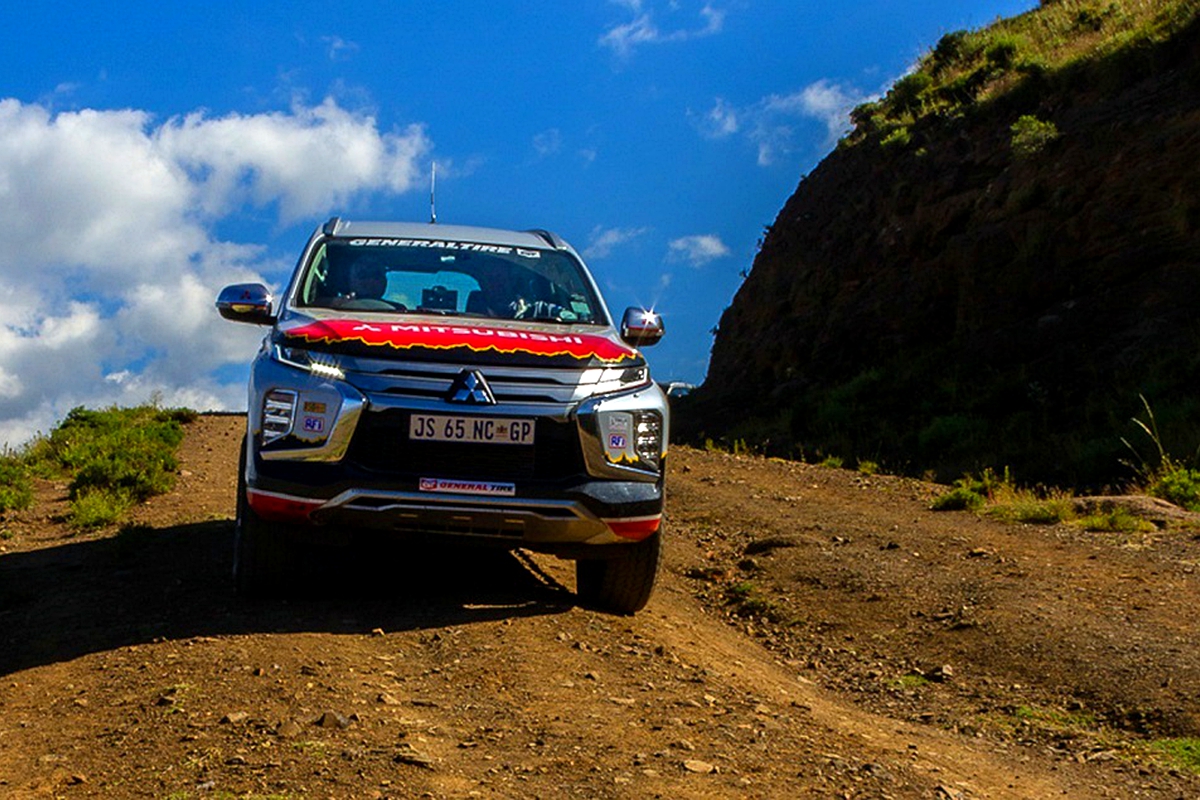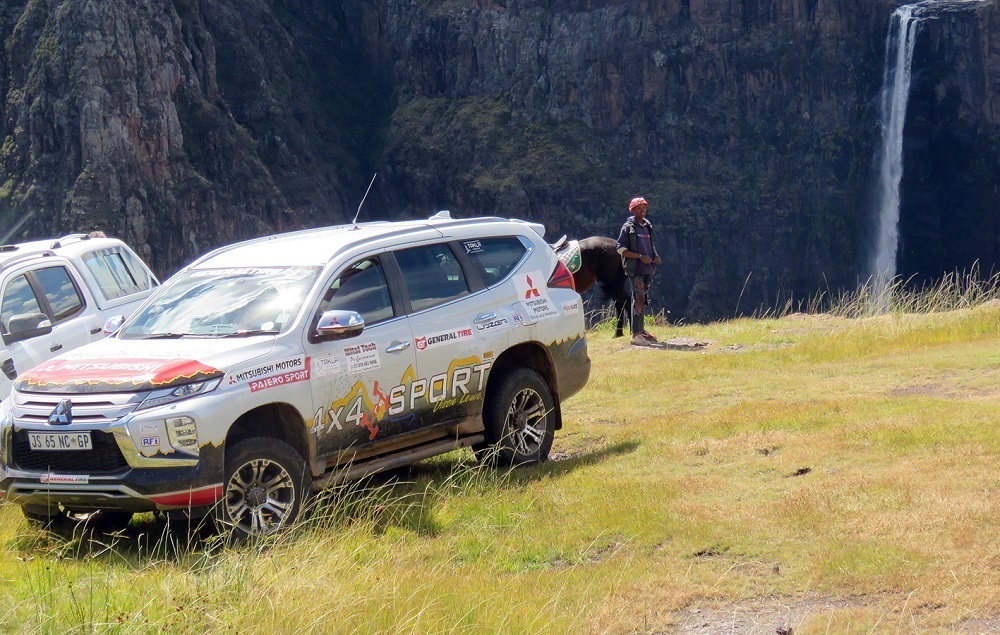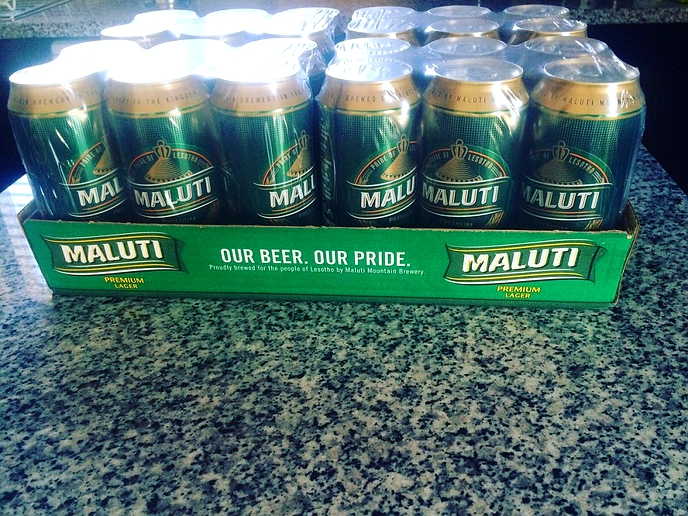JOHANNESBURG – During winter months the highest-lying areas of Lesotho – often referred to as the Mountain Kingdom – are covered in a blanket of snow.
society
July 7, 2021
OWN CORRESPONDENT
5 min read
Pajero Sport rules the roost in the Mountain Kingdom

The Mitsubishi Pajero Sport
For obvious reasons this would not be the best time to tackle some of the country’s infamous mountain routes, so 4x4 fundi, Francois Rossouw, took full advantage of the last days of warm weather to tackle over 42 serious mountain passes in seven days at the wheel of his sponsored Mitsubishi Pajero Sport.
The first day of the epic adventure saw Rossouw’s 4x4SPORT team crossing the border between South Africa and Lesotho in Ficksburg, from where they headed north to the Moteng Pass.
Although tarred, the pass is still an exhilarating drive as it reaches a height of 2 820 metres through over 90 corners, curves and extreme bends. Located between the town of Kala and the Afriski Mountain Resort, it lies above the snow line so it is often closed in winter because of inclement weather.
However, even if it had been snowing, the Pajero Sport would not have faltered, thanks to Mitsubishi’s renowned Super Select 4WD-II system, which delivers impressive performance in all conditions and over even the most rugged terrain. The selectable Off-Road Modes maximise traction and by selecting either Gravel, Mud/Snow, Sand or Rock to suit surface conditions, engine output, transmission settings and braking are optimised to provide superior traction control.
A whole range of passes followed before the group reached the Letšeng Diamond Mine, which – at an elevation of 3 100 metres – is the world’s highest diamond mine. It also has the distinction of having the highest percentage of diamonds larger than 10 carats. In winter months temperatures at the site can drop to -20 degrees Celsius and snowfall is common.
The next stop was the construction site of the Polihale Dam. Once completed, it will be the third and biggest dam in the Lesotho Highlands water scheme and will feed the Katse Dam via a 33-kilometre tunnel.
From here the road became virtually non-existent and driving conditions deteriorated rapidly. “I was so comfortable in the Pajero Sport that it never dawned on me that some of the other vehicle in the convoy might be struggling to keep up, or were being hampered by the high altitude,” Rossouw says.
After overnighting at the Katse Dam, the second-largest arch dam in Africa, the group tackled the next series of passes on the way to Thaba-Tseka.
The district was established in 1980 and due to the beautiful surroundings and many outdoor activities and attractions on offer, is a popular tourist destination.
The following day saw man and machine tested to their limits as the convoy tackled a series of passes that are still being built and, as such, are not indicated on any map or GPS.
“Thankfully our guide, Wiesman Nel, knows Lesotho like the palm of his hand. He regularly takes European visitors on horseback adventures into the mountains and his experience and expertise proved to be invaluable as we tackled the inhospitable terrain in our trusty 4x4 steeds,” comments Rossouw.
The group spent the next two days visiting the Sehlabathebe National Park and the Maletsunyane Falls, which has a height of 192 metres and is situated near the small town of Semonkong.
On the last day of the trip, the group travelled all the way around the Mohale Dam, before taking on the Blue Mountain Pass, the aptly named God Help Me Pass and the Bushman's Pass. The next stop was the Thaba Bosiu Mountain on the way back to the border.

Enjoy our daily newsletter from today
Access exclusive newsletters, along with previews of new media releases.
“After 1 330 kilometres on dirt roads and treacherous passes we were relieved to be back on tar and on our way home. As always, the Pajero Sport didn’t miss a beat and even had to tow other 4x4 vehicles through difficult spots on a few occasions,” says Rossouw. “I was equally impressed by the fact that it still had an average fuel consumption of 12 litres/100km, despite serious 4x4 conditions and the high altitude.”
It has been six months since Rossouw took delivery of his new Pajero Sport. “We bonded immediately,” he says. “I have driven just about everything with four-wheel drive, but this vehicle continues to surprise and amaze me. I would even go as far as to say that Mitsubishi has managed to create an almost-perfect blend of elegance, space, safety, comfort and agility.
“In addition, the 2.4L MIVEC Turbodiesel four-cylinder intercooled turbo diesel engine, offering 133 kW and 430 Nm of peak torque and driving the wheels through Mitsubishi’s advanced eight-speed automatic transmission makes the Pajero Sport the ideal vehicle for my many off-road adventures.”
“The way in which the Pajero Sport continues to perform in the hands of a renowned 4x4 expert such as Rossouw reaffirms just how safe, capable and reliable Mitsubishi products are,” says Nic Campbell, General Manager of Mitsubishi Motors South. “The feedback he has provided has been extremely positive and we are proud of the fact that we have been able to prove that our products live up to our promise to ‘Elevate your Journey’.”
There are three Pajero Sport derivatives on offer from Mitsubishi Motors South Africa. All models have a three-year/100 000km manufacturer’s warranty and a five-year/90 000km service plan, with 10 000km service intervals.
Tailored for you






